A mead refresher: This alcoholic bracer made from fermented honey has ancient cultural associations. Paired in the fermenting process with any combination of botanicals, unusual fruit and wild yeasts, modern mead can be sparkling, frizzante, dry, sweet, or a star performer in cocktails.
Mead in its many forms can be sampled at Honey’s Bar, the tasting room of Enlightenment Wines Meadery in Bushwick, Brooklyn. Six years ago, herbalist and garden designer Naneh Israelyan (whose business goes by the name Pioneer Flora) took on the rooftop garden, which had been conceived as “a botanical library of historically significant and medicinal plants.” It is run separately from the meadery, although Naneh collaborates with its founders, Raphael Lyon, and Harris Gilbert Shper. “The rooftop has served as a space for exploring the shared history of plant medicine and mead-making.”
The garden is also a place for experimenting with urban growing, plant lore, and alchemy. We visited in the summer and retreated indoors with her in the fall to find out more.
Photography by Valery Rizzo.
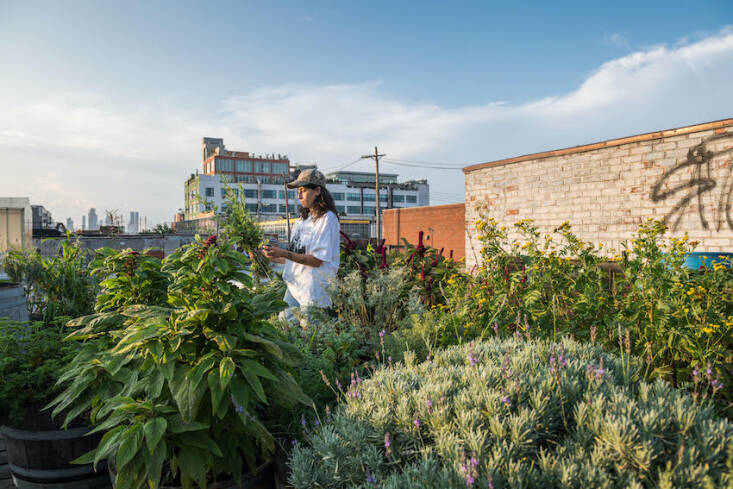
Plantings on the roof change from year to year. This season’s collection of medicinal and cultural plants included Japanese mugwort, lavender, wormwood, common tansy, edible amaranth, and rose geranium. “I am, at my core, a gardener, deepening my knowledge in edible landscaping, meadow gardens, and medicinal plant cultivation,” says Naneh.
When Naneh first joined joined Honey’s rooftop garden, it was a rudimentary setup that nevertheless supported an impressive selection of plants. “Some of the earliest plantings I inherited were wormwood, dittany, Greek mountain tea, rosemary, yarrow, lavender, and beach rose. Over the years, the garden has expanded to house over 50 species, including medicinal, edible, and rare varieties.” From seed, she grew gentian, nettle, feverfew, valerian, mallow, calendulas, blessed thistle, licorice, and lobelia. “This ongoing evolution reflects a changing seasonal theme that I later translate into limited-edition botanical extracts under Pioneer Flora.”
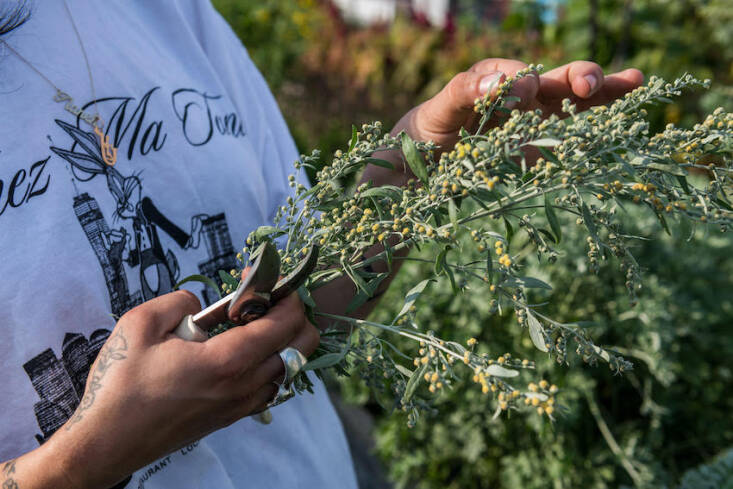
“A highlight of the garden has been the artemisias—wormwood, southernwood, and Japanese mugwort—proving to be the most robust, long-lived, and persistent species. My interest in this genus grew even more when I foraged for beach wormwood and official mugwort during a summer working for a private client in East Hampton, leading to a significant increase in my inventory of Artemisia species.
Artemisias form the backbone of ‘Regulate’, a menstruation tonic that has become a staple of Pioneer Flora. Originally formulated for balancing menstrual cycles, alleviating cramps, and managing other related issues, Regulate has been refined over the seasons into a product that Naneh produces each year.
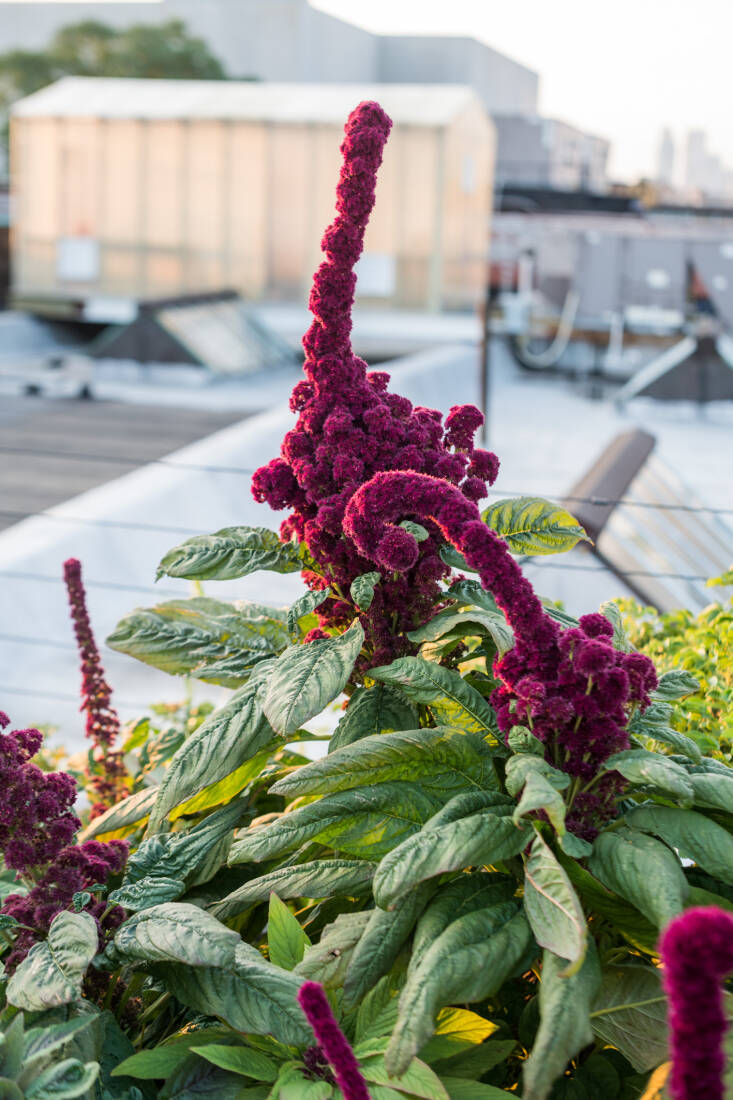
“Color and planting themes are of growing importance, with edible amaranth serving as one of my main annuals,” says Naneh. “The brilliant crimson plumes have made it a cornerstone of the garden, and I’m planning a denser planting of dark leafy greens around the stalks next season.”
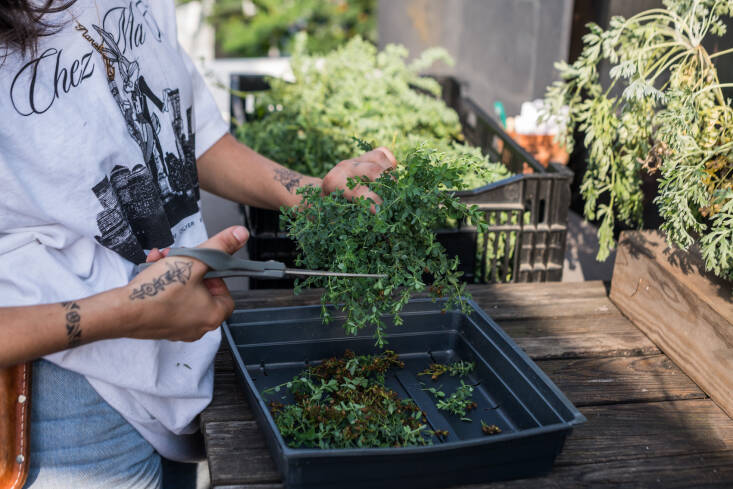
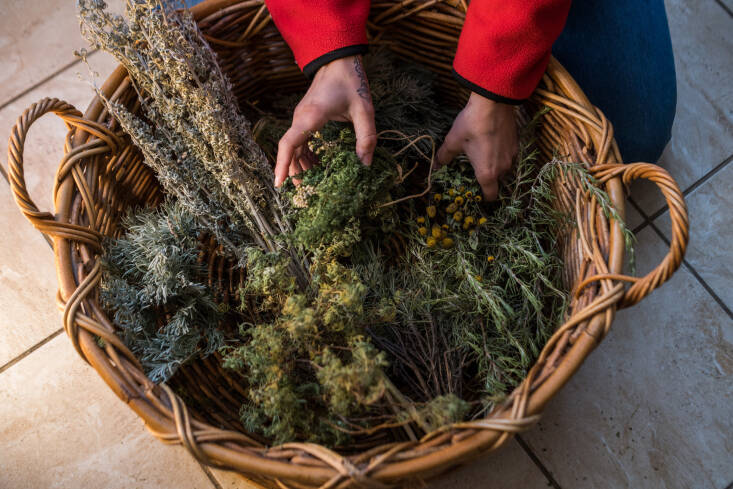
Shown here, herbs that are ready to be stripped and processed include toothache plant (Acmella paniculata), southernwood (Artemisia abrotanum), wormwood (Artemisia absinthium), St. John’s wort (Hypericum perforatum), and lavender (Lavandula angustifolia).
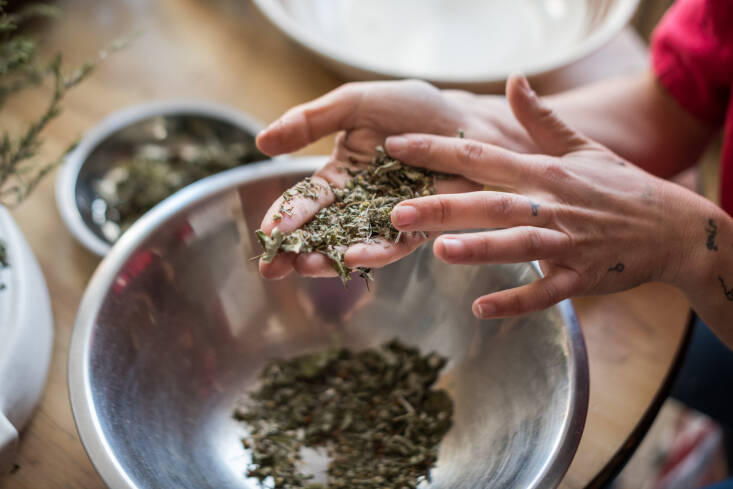
“The medicinal properties of Artemisia are well-documented in pharmacopoeias worldwide; their applications in female reproductive health span from ancient civilizations to indigenous cultures.”
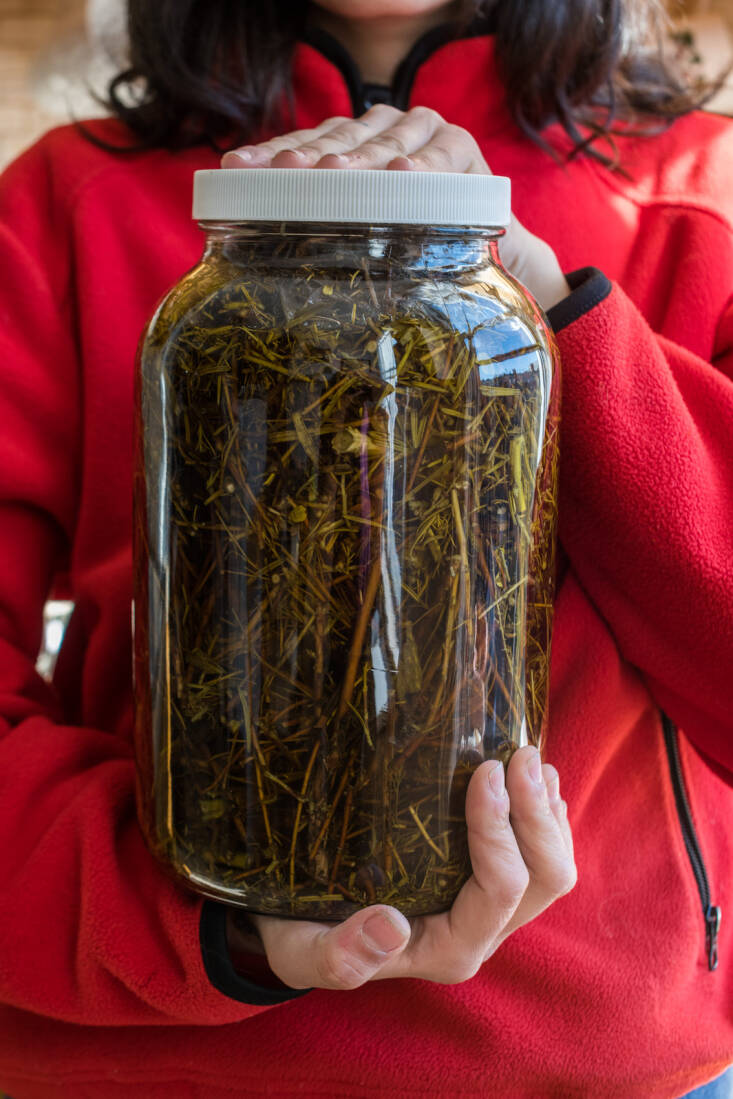
Naneh is of Armenian descent. “My upbringing has profoundly influenced my knowledge and practices surrounding plant medicine. Armenian culture contains a deep reservoir of herbal knowledge that I still draw from today.”
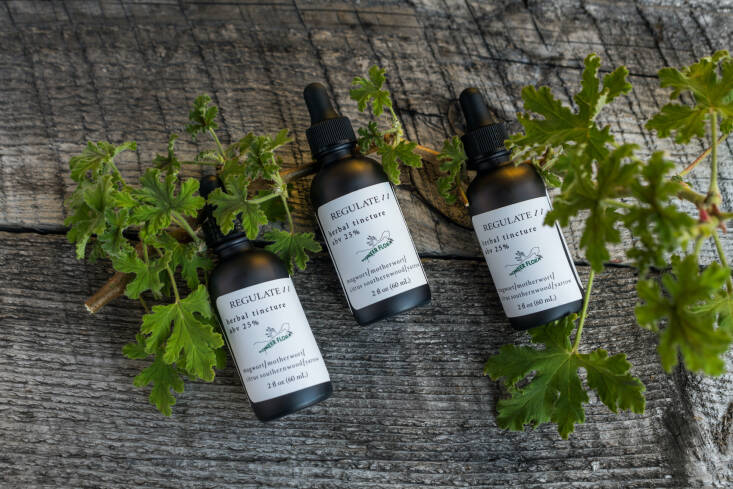
“In terms of the future of Pioneer Flora, I see the commercialization of herbal medicine as a Sisyphean task. However, my hope is to eventually develop ‘Regulate’ into a proprietary blend that will be widely available and affordable. I would oversee the process from planting to bottle.”
See also:
- Garden Visit: Farming on the Roof in Hell’s Kitchen
- From Garden to Paper Plate: In NYC’s Lower East Side, a Community Garden Where Kids Pick Their Food
- Mugwort the Herb vs. Mugwort the Weed
N.B.: This story originally appeared on December 31, 2024 and has been updated with new links and pricing.
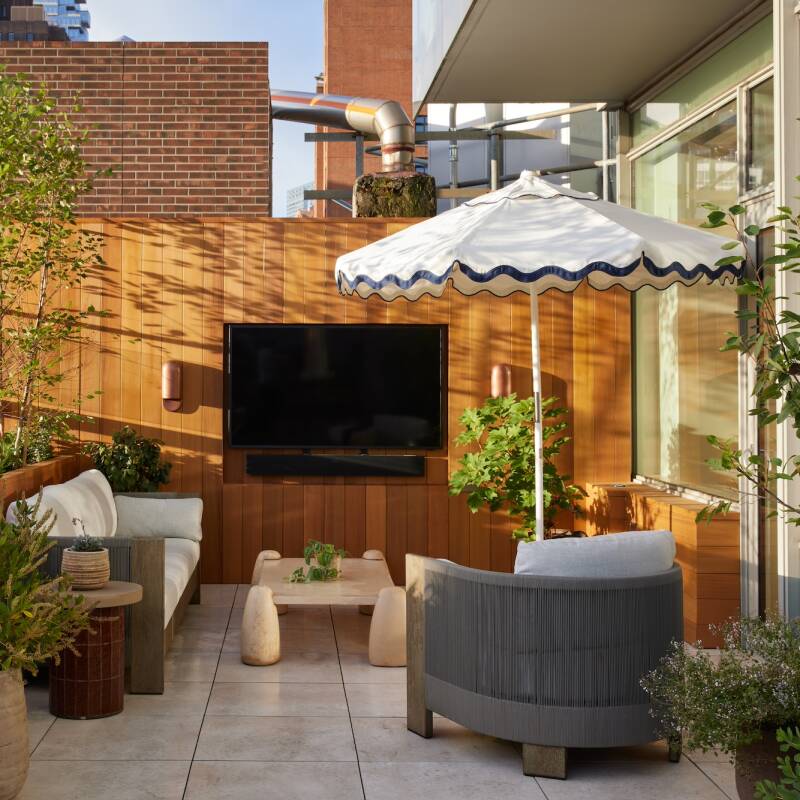
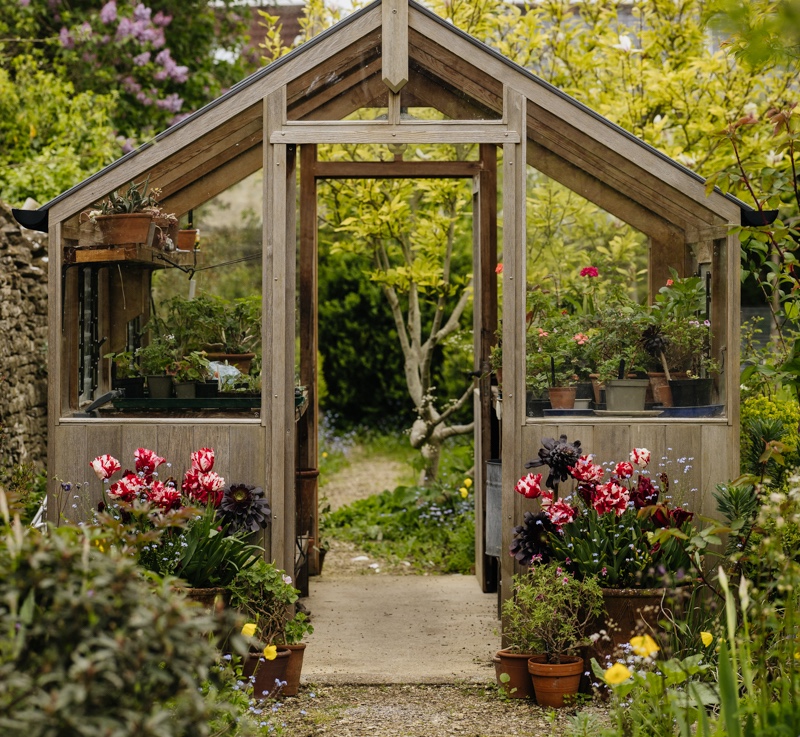
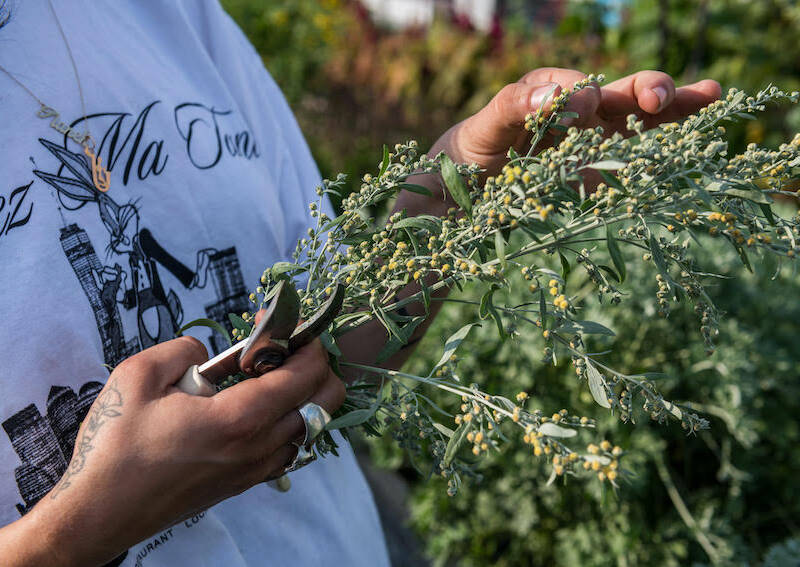







Have a Question or Comment About This Post?
Join the conversation